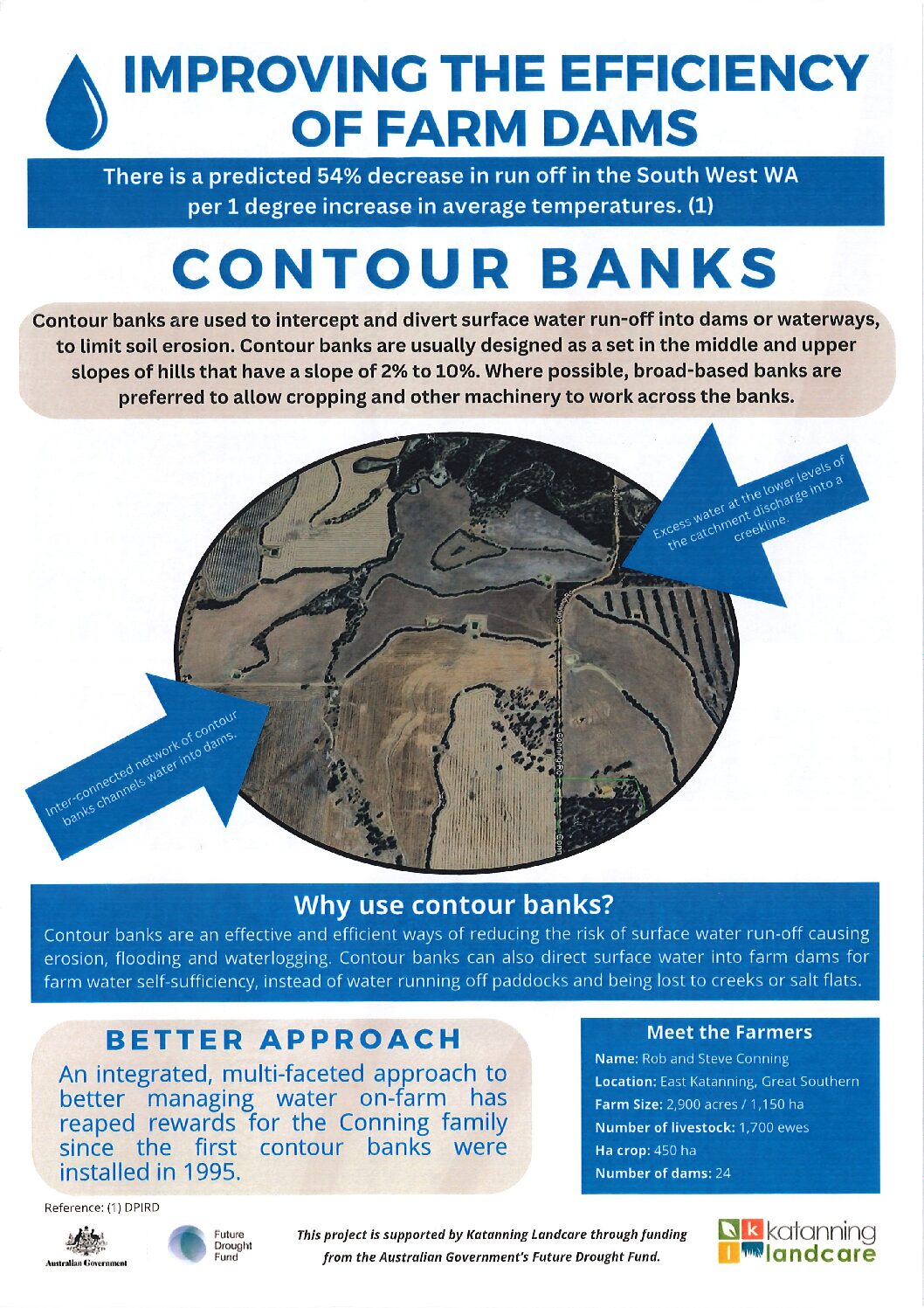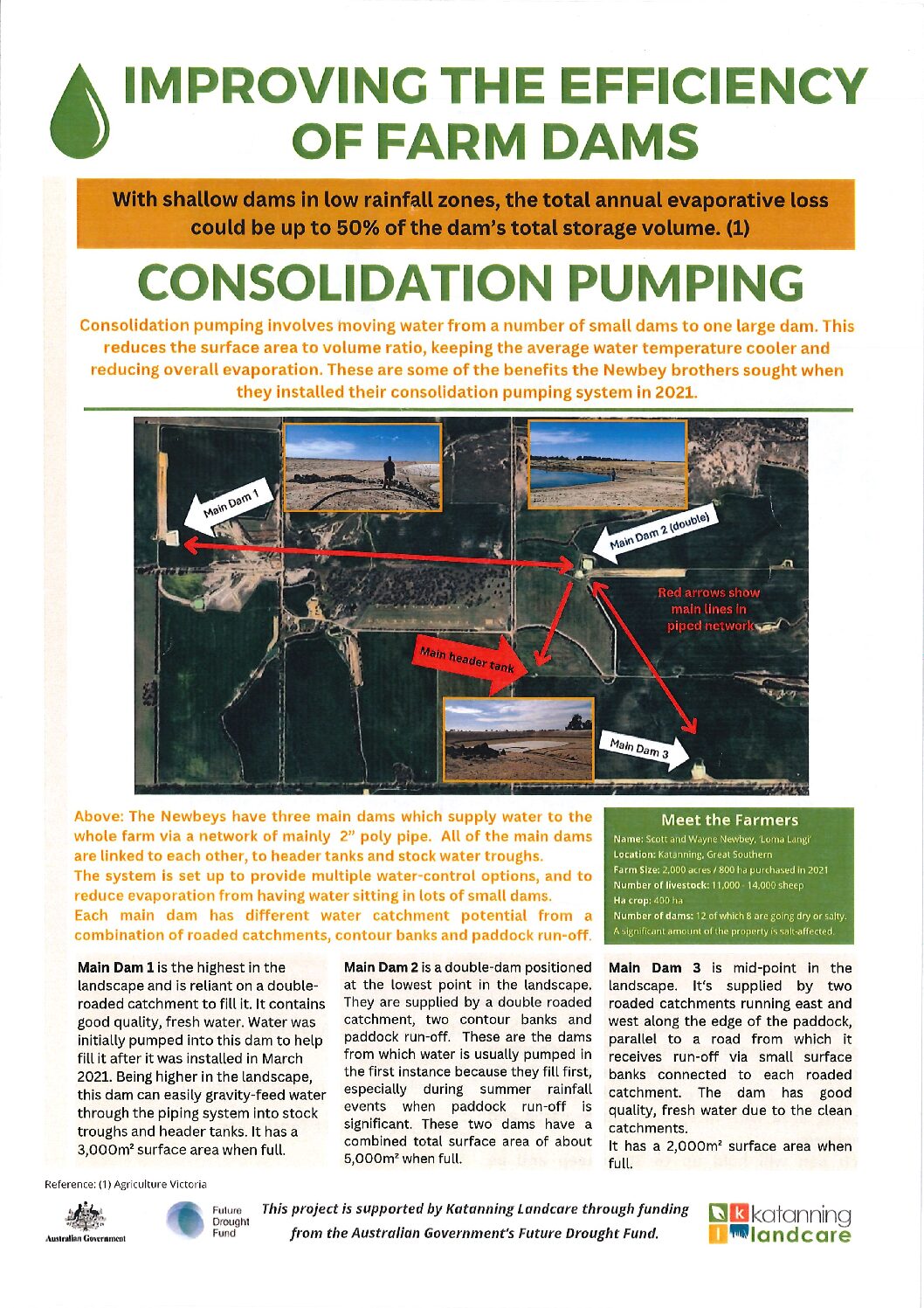Katanning Landcare Case Studies
The project aims to develop a better understanding and enhance the role of farm dams for drought resilience in the Broadacre agricultural landscape of Katanning, WA. Two demonstration methods, dam covers and biological enhancement, will be investigated along with case studies of best practice dam management, such as water consolidation, piped inlets, and desilting of both contour banks and roaded catchments. Three iterations of a Drought Planning workshop were held to facilitate dissemination and extension, incorporating feedback from farmers to determine future needs.
This project was funded by the Drought Resilience Innovation Grants through the Department of Agriculture, Fisheries and Forestry. The Grant, which was awarded to the Katanning Land Conservation District Committee, supports projects that help Australian farmers, and agricultural-dependent communities and businesses, adopt innovative approaches and technologies to improve drought resilience. Total funding amount: $50,358.00. To find out more about the Drought Resilience Innovation Grants click here.
To find out more about Katanning Landcare projects, visit their Facebook Page here.
Case Studies
Roaded Catchments
A roaded catchment is a water-harvesting structure designed to increase the amount of run-off from the catchment above a receiving farm dam.
Contour Banks
Contour banks are used to intercept and divert surface water run-off into dams or waterways to limit soil erosion.
Dam Covers
Dam covers are physical barriers to evaporation which cover the surface of the water. Katanning Landcare trialed floating dam mats over two years.
Enhanced Dams
Enhanced dams refer to a method of managing a farm dam like a wetland ecosystem to improve both environmental and agricultural outcomes.
Katanning Landcare trialed two Enhanced dams.
Consolidation Pumping
Consolidation pumping involves moving water from a number of small dams to one large dam. This reduces surface area to volume ratio, keeping the average water temperature cooler and reducing overall evaporation.





